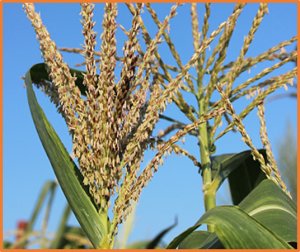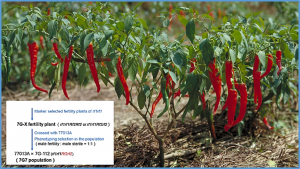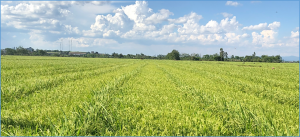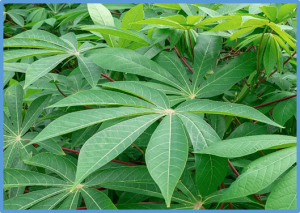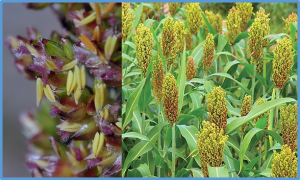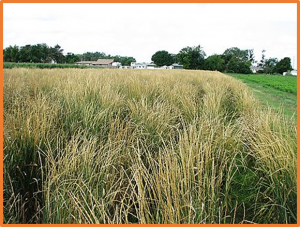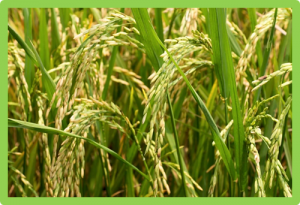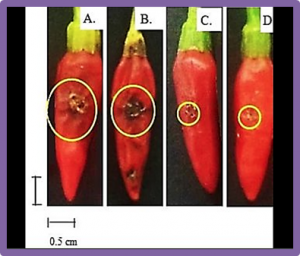Maize (Zea mays) originated in tropical areas and is thus susceptible to low temperatures, which pose a major threat to maize production. Our understanding of the molecular basis of cold tolerance in maize is limited. Here, we identified bZIP68, a basic leucine zipper (bZIP) transcription factor, as a negative regulator of cold tolerance in maize. Transcriptome analysis revealed that bZIP68 represses the cold-induced expression of DREB1 transcription factor genes.
Male fertility restoration genes of chili pepper restorer line G164 (Capsicum annuum L.) were studied using molecular marker genotypes of an F2 population (7G) of G164 crossed with the cytoplasmic male sterility line 77013A. The ratio of sterile to fertile single plants in the F2 population was 1:15. This result indicates that chili pepper G164 has two dominant restoration genes, which we designated as Rf1 and Rf2. An individual plant recessive for Rf1 and heterozygous for Rf2, 7G-112 (rf1rf1Rf2rf2)
Three-line hybrid rice obtained through cytoplasmic male sterility (CMS) has helped increase the yield of rice globally, and the wild abortive (WA)-type cytoplasm from wild rice (Oryza rufipogon Griff.) is used widely in three-line indica hybrids. The identification and mapping of the Restorer-of-fertility (Rf) genes in maintainer lines aided in uncovering the genetic basis of fertility restoration of WA-type CMS and the development of WA-type hybrids
Cassava (Manihot esculenta Crantz) is the sixth most important food crop and consumed by 800 million people worldwide. In Africa, cassava is the second most important food crop after maize and Africa is the worlds' largest producer. Though cassava is not one of the main commodity crops in South Africa, it is becoming a popular crop among farming communities in frost-free areas, due to its climate-resilient nature.
Salt tolerance in plants is triggered by various environmental stress factors and endogenous hormonal signals. Numerous studies have shown that WRKY transcription factors are involved in regulating plant salt tolerance. However, the underlying mechanism for WRKY transcription factors regulated salt stress response and signal transduction pathways remains largely unknown. In this study, the SbWRKY55 transcription factor was found to be the key component for reduced levels of salt and abscisic acid in SbWRKY55 overexpression significantly reduced salt tolerance in sorghum and Arabidopsis.
Low temperature reduces the percentage of seeds germinating and delays seed germinating time, thus posing a threat to cucumber production. However, the molecular mechanism regulating low temperature germination in cucumber is unknown. We here dissected a major quantitative trait locus qLTG1.1 that controls seed germination at low temperature in cucumber. First, we fine-mapped qLTG1.1 to a 46.3-kb interval, containing three candidate genes.
Perennial grains have the potential to provide food for humans and decrease the negative impacts of annual agriculture. Intermediate wheatgrass (IWG, Thinopyrum intermedium, Kernza®) is a promising perennial grain candidate that The Land Institute has been breeding since 2003. We evaluated four consecutive breeding cycles of IWG from 2016 to 2020 with each cycle containing approximately 1100 unique genets.
Grass species exhibit large diversity in panicle architecture influenced by genes, the environment, and their interaction. The genetic study of panicle architecture in perennial grasses is limited. In this study, we evaluate the genetic basis of panicle architecture including panicle length, primary branching number, and secondary branching number in an outcrossed switchgrass QTL population grown across ten field sites in the central USA through multi-environment mixed QTL analysis.
Complex biological processes such as plant growth and development are often under the control of transcription factors that regulate the expression of large sets of genes and activate subordinate transcription factors in a cascade-like fashion. Here, by screening candidate photosynthesis-related transcription factors in rice, we identified a DREB (Dehydration Responsive Element Binding) family member, OsDREB1C, in which expression is induced by both light and low nitrogen status.
In several countries throughout the world, the whitefly-transmitted begomovirus causes massive yield losses in pepper (Capsicum spp.) production. Although introgression of the genetic resistance against begomovirus to commercial cultivars is strongly required, the recently discovered recessive resistance gene pepy-1, which encodes the messenger RNA surveillance factor Pelota, is the only begomovirus resistance gene identified in Capsicum so far. In this study, we fine-mapped another begomovirus resistance gene from PG1-1 (C. annuum),


 Curently online :
Curently online :
 Total visitors :
Total visitors :
